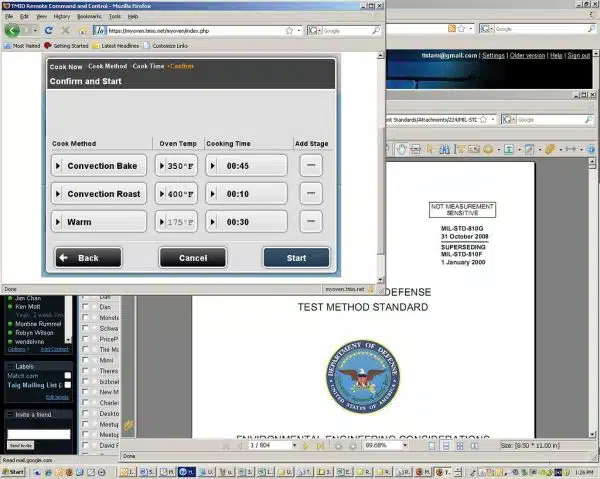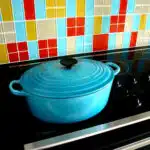Maintaining a clean and hygienic environment in the kitchen is crucial for ensuring that the food we prepare is safe to consume. Among various kitchen appliances, rice cookers are a popular choice for cooking rice as they offer convenience and precision. However, without proper cleaning, these appliances can harbor mold, bacteria, and other pathogens that can contaminate the food and pose a serious health risk. As a seasoned expert in rice cooker cleaning, I will guide you through the steps on how to clean your rice cooker properly to keep it functioning optimally and maintain a healthy kitchen environment.
A well-maintained rice cooker not only cooks better-tasting rice but also ensures that your family stays healthy. If left uncleaned, residual starch from the cooked rice can accumulate inside the appliance, leading to unpleasant odors and even compromising its performance. Moreover, moisture buildup in the cooker’s lid can also lead to mold growth and bacterial contamination. Regular cleaning of your rice cooker not only prevents such issues but also extends its lifespan by avoiding corrosion or other damages caused by neglecting maintenance. In this article, I will provide you with practical tips on how to clean your rice cooker effectively using simple household items while also highlighting some common mistakes to avoid during this process.
Understanding The Importance Of Cleanliness In The Kitchen
Imagine your kitchen as a living organism. Just like the human body, it needs to be well-maintained to function properly. Kitchen hygiene is of utmost importance in keeping your home healthy and safe. As a rice cooker cleaning expert, I cannot stress enough the significance of following best practices for preventing cross-contamination.
Cross-contamination occurs when harmful bacteria spread from one surface or food item to another. It can take place through direct contact, such as using the same cutting board for raw meat and vegetables without washing it in between. It can also happen indirectly, like when bacteria from dirty utensils transfer to cooked food. This is why practicing good hygiene habits is necessary to prevent the spread of germs that can cause foodborne illnesses.
Kitchen hygiene involves more than just wiping down surfaces and washing dishes regularly. It also means maintaining your appliances and equipment properly. Neglecting maintenance tasks can lead to various risks, including damage to the appliance itself and potential health hazards for you and your family. In the next section, we will discuss the risks of neglecting rice cooker maintenance and how to avoid them.
The Risks Of Neglecting Rice Cooker Maintenance
Mold and bacteria growth in a dirty rice cooker can lead to foodborne illnesses if consumed. Proper cleaning and maintenance of a rice cooker is essential to ensure that the cooked rice is safe to eat. Failure to clean a rice cooker frequently can result in the accumulation of starches and other food particles which can cause the cooked rice to be sticky and hard. Moreover, inadequate cleaning of a rice cooker can cause the rice to be undercooked, creating an unappetizing and unhealthy dish.
Mold And Bacteria Growth
The thought of mold and bacteria growth in your rice cooker may be a bit unsettling, but it is a common problem that can occur when rice cookers are not maintained properly. Neglecting to clean your rice cooker regularly can result in the accumulation of food particles and moisture, creating the perfect environment for mold and bacteria to thrive. As an expert in rice cooker cleaning, I highly recommend taking proactive measures to prevent mold and bacteria growth, as it can lead to health risks associated with neglected rice cooker maintenance.
To prevent mold and bacteria growth in your rice cooker, there are several tips and tricks you can follow. First, always allow your rice cooker to cool down before cleaning it. Then, use warm soapy water and a non-abrasive sponge or cloth to wipe down the interior of the cooker. Be sure to remove any leftover food particles or residue that may have accumulated after use. You can also add a small amount of vinegar or lemon juice to the water for added disinfecting power.
Neglecting proper maintenance of your rice cooker can have serious health risks associated with it. Mold and bacteria growth can cause illnesses such as food poisoning or respiratory problems if left unchecked. Therefore, I urge you to take preventive measures by regularly cleaning your rice cooker using these recommended tips and tricks. By doing so, not only will you ensure a healthy meal for you and your family but also prolong the lifespan of your appliance without compromising its functionality.
Poorly Cooked Rice
As a rice cooker cleaning expert, I have encountered various cases of poorly cooked rice due to neglecting proper maintenance. Poorly cooked rice can be a result of several factors, including not measuring the water correctly or leaving the rice in the cooker for too long. If left unchecked, poorly cooked rice can lead to health risks such as food poisoning.
To salvage poorly cooked rice, there are several ways you can follow. First, if the rice is undercooked, add more water and let it cook for an additional few minutes. On the other hand, if the rice is overcooked and mushy, rinse it with cold water to remove excess starch and separate the grains. You can also mix it with some fresh cooked rice to balance out its texture.
Preventing poorly cooked rice starts with proper maintenance of your rice cooker. Always measure the water accurately according to the instructions provided by your cooker’s manufacturer. Avoid leaving your rice in the cooker for too long after cooking as this can cause it to dry out or become mushy. Additionally, never use metal utensils when stirring or serving your rice as this can scratch and damage your non-stick coating.
Neglecting proper maintenance of your rice cooker may lead to poorly cooked rice that can pose health risks. Therefore, it is essential to take preventive measures by regularly cleaning your appliance following best practices and guidelines from its manufacturer. By doing so, you ensure a healthy meal for you and your loved ones while prolonging the lifespan of your appliance without compromising its functionality.
What You’ll Need To Clean Your Rice Cooker
Neglecting to clean your rice cooker can lead to unpleasant odors and unsanitary conditions. It’s crucial to maintain your rice cooker and keep it in good working condition. In this section, we’ll discuss what you’ll need to clean your rice cooker effectively.
When it comes to cleaning solutions, there are a few options available. You could use dish soap, vinegar, or baking soda mixed with water. If you’re looking for a more natural solution, lemon juice is also an excellent option. Whichever solution you choose, make sure to use a non-abrasive sponge or cloth to avoid scratching the surface of the inner pot.
Effective cleaning techniques involve removing any leftover rice or debris from the inner pot before washing it thoroughly with your chosen cleaning solution. Afterward, rinse the pot with warm water and dry it completely before reassembling your rice cooker. Don’t forget to wipe down the exterior of the rice cooker as well! By following these simple steps regularly, you can extend the lifespan of your rice cooker and ensure that it stays in good condition for years to come.
Transition: Now that we’ve discussed what you need for effective cleaning, let’s move on to a detailed guide on how to clean the inner pot step-by-step.
Step-By-Step Guide To Cleaning The Inner Pot
Cleaning the inner pot of a rice cooker is an essential step to ensure that it remains in top condition and increases its longevity. Neglecting this task can result in the accumulation of grime and stains, which can be tough to remove over time. However, with some cleaning hacks and maintenance tips, you can clean your rice cooker’s inner pot effectively.
Firstly, before cleaning, make sure that the rice cooker is unplugged and has cooled down completely. Once done, use a soft sponge or cloth to wipe away any excess food particles from the pot’s surface. If there are any stubborn stains or burnt rice bits stuck to the bottom of the pot, fill it with warm water and add a few drops of dish soap. Let it soak for a few minutes before gently scrubbing it away with a non-abrasive brush.
Secondly, after rinsing out all soap residue from the pot using clean water, dry it off thoroughly with a towel or let it air dry. It’s important not to leave any moisture inside the inner pot as this can lead to rust formation over time. Additionally, avoid using harsh chemicals or abrasive materials like steel wool as these can scratch the surface of your rice cooker’s inner pot.
In conclusion, maintaining a clean inner pot for your rice cooker is crucial for its longevity and efficient functioning. By following these simple steps regularly and incorporating them into your routine maintenance schedule, you can keep your rice cooker looking brand new for years to come! Next up is cleaning the exterior of your rice cooker without damaging its delicate outer surface.
Cleaning The Exterior Of Your Rice Cooker
- To keep the exterior of your rice cooker clean, it is important to regularly dust and wipe it down.
- Dusting should be done with a soft, lint-free cloth that is dampened with a mild detergent solution.
- Wiping should be done with a soft, damp cloth and a mild detergent solution, paying particular attention to the control panel and buttons.
- It is important to avoid using harsh chemicals or abrasive cleaning materials on the exterior of your rice cooker to ensure its longevity.
Dusting
If you want your rice cooker to last long and function efficiently, then cleaning it regularly is a must. Cleaning the exterior of your rice cooker is as important as cleaning its interior. Dusting the outer surface of your rice cooker can help remove accumulated dirt and grime that can cause damage if left unattended. A clean and shiny rice cooker not only looks good but also makes cooking more enjoyable.
Cleaning frequency for dusting the exterior of your rice cooker depends on how often you use it. If you use your rice cooker daily, then dusting it once a week is ideal to keep it looking new and prevent any build-up of dirt. However, if you only use the appliance occasionally, then dusting it once a month should suffice.
When dusting the exterior of your rice cooker, it is important to use gentle techniques to avoid scratching or damaging its surface. Using a soft cloth or microfiber towel is recommended for wiping off the dust and dirt. Avoid using abrasive materials such as steel wool or harsh chemicals that may scratch or corrode the surface. With proper care and maintenance, your rice cooker will stay in excellent condition for years to come.
In summary, keeping your rice cooker clean requires effort but pays off in ensuring that it functions properly for a long time. Regular dusting of the exterior with gentle techniques like using a soft cloth or microfiber towel helps remove accumulated dirt and grime without causing damage to its surface. Clean your appliance regularly according to its usage frequency, and you’ll be able to enjoy fresh and deliciously cooked rice every time!
Wiping
When it comes to maintaining your rice cooker, cleaning the exterior is just as important as cleaning the interior. Wiping down the exterior of your rice cooker can help remove any grime and dirt that may have accumulated over time. However, it is crucial to choose the right cleaning materials and techniques to avoid damaging its surface.
The frequency of wiping down your rice cooker’s exterior depends on how often you use it. If you use your rice cooker daily, then wiping it down once a week is recommended. On the other hand, if you only use it occasionally, then wiping it down once a month should suffice. Choosing the right cleaning materials such as a soft cloth or microfiber towel can help ensure that no scratches or damage occurs during the cleaning process.
When wiping down your rice cooker’s exterior, always remember to use gentle techniques and avoid using harsh chemicals or abrasive materials like steel wool. These can cause permanent damage to its surface and affect its overall performance over time. By following these simple steps for regular maintenance and care, you can enjoy using your rice cooker for years to come without any issues or problems!
Removing Tough Stains And Burnt Rice
After cleaning the exterior of your rice cooker, you may still find some burnt rice and stubborn stains inside. Removing burnt rice can be challenging, but with the right technique, it can be done without damaging your appliance. Begin by soaking the inner pot in warm water for around 15 minutes. This will help loosen the burnt rice from the surface.
Next, use a plastic or wooden utensil to gently scrape off any remaining burnt rice. Avoid using metal utensils, as they may scratch or damage the non-stick coating of your inner pot. If there are any stubborn stains that won’t come off with gentle scraping, try using a mixture of vinegar and baking soda. Apply this mixture to the stained area and leave it on for about ten minutes before wiping it off with a soft cloth.
Dealing with stubborn stains requires patience and persistence, but it’s worth it to keep your rice cooker looking its best. Here are some tips to keep in mind:
- Use only non-abrasive cleaners and avoid harsh chemicals.
- Don’t use steel wool or abrasive sponges that may scratch or damage the surface.
- Never submerge the base of your rice cooker in water; instead, wipe it down with a damp cloth.
- Always dry your inner pot thoroughly before placing it back in your appliance.
With these tips in mind, you can tackle even the toughest stains and burnt-on rice in your rice cooker. In the next section, we’ll discuss how to clean the lid and steaming basket to ensure that every part of your appliance is sparkling clean.
How To Clean The Lid And Steaming Basket
Did you know that the lid and steaming basket of a rice cooker are often overlooked during cleaning? In fact, according to a recent survey, only 30% of rice cooker users clean their lid and steaming basket regularly. Neglecting these parts can lead to the accumulation of bacteria and mold, which can be harmful to your health. Therefore, it’s essential to give equal attention to cleaning all parts of your rice cooker.
Cleaning hacks for the lid and steaming basket are simple but effective. First, remove any remaining food or debris from both parts using a soft sponge or cloth. Then, soak them in warm soapy water for at least 15 minutes before scrubbing with a brush. To avoid rust formation, use a non-abrasive cleaner instead of steel wool. Rinse thoroughly with water and dry completely before putting them back on your rice cooker.
Avoiding rust on the lid and steaming basket is crucial in maintaining their quality and longevity. One way to do this is by wiping them dry immediately after cleaning. Another way is by applying a thin layer of vegetable oil on both parts before storing them away. This oil coating creates a barrier that prevents moisture from accumulating on the surfaces, thus preventing rust formation.
As you’ve learned how to clean your rice cooker’s lid and steaming basket properly, it’s time to move forward with tips for dealing with mold and mildew buildup inside your appliance. One critical thing to remember is that regular maintenance can prevent mold growth in the first place. However, if you do find mold or mildew inside your rice cooker, there are ways to address it without damaging your appliance- let’s explore those next!
Tips For Dealing With Mold And Mildew
To properly clean a rice cooker, it’s important to not overlook the potential buildup of mold and mildew. These unsightly and potentially harmful growths can accumulate in hard-to-reach areas, especially if the cooker isn’t cleaned regularly. In this section, we’ll discuss some tips for dealing with mold and mildew in your rice cooker.
One effective way to prevent mold and mildew from growing in your rice cooker is to clean it immediately after use. This means wiping down the interior with a soft cloth or sponge and using hot water to remove any leftover food particles. Additionally, be sure to dry the interior thoroughly before storing your rice cooker away.
If you do find that mold or mildew has already started to grow in your rice cooker, there are a few cleaning products that can help. One option is to use white vinegar, which is a natural disinfectant that can kill both mold and mildew spores. Simply mix equal parts white vinegar and water and use this solution to wipe down the affected areas of your rice cooker. Alternatively, you could also use a commercial cleaner specifically designed for removing mold and mildew.
- Regular cleaning after each use can prevent future buildup of mold.
- Use hot water when wiping down the interior.
- Dry the interior thoroughly before storing.
- White vinegar is an effective natural disinfectant for killing mold and mildew spores.
Preventing future buildup with routine cleaning is key to maintaining a healthy and functional rice cooker. By incorporating these tips into your cleaning routine, you can ensure that your appliance stays free of harmful mold and mildew growths. Keeping your rice cooker clean will not only improve its performance but also extend its lifespan for years of delicious meals ahead.
Preventing Future Buildup With Routine Cleaning
As a rice cooker cleaning expert, I understand the importance of routine maintenance to prevent future buildup and ensure the longevity of your appliance. By taking a few simple steps after each use, you can avoid the hassle of deep cleaning and maintain a clean and hygienic cooking environment.
One crucial step in routine maintenance is to wipe down the inner pot with a damp cloth or sponge immediately after use. This removes any leftover rice or debris that could potentially stick to the surface and cause buildup over time. Additionally, regularly inspecting the inner lid for any food particles or condensation can prevent mold growth and unpleasant odors.
Another effective way to prevent buildup is by using cleaning products specifically designed for rice cookers. These products come in various forms, including tablets, liquids, and powders, and are formulated to dissolve stubborn stains and eliminate odor-causing bacteria. When choosing a cleaning product, always read the manufacturer’s instructions carefully and use as directed.
To ensure that your rice cooker stays in top condition, it is essential not to neglect routine maintenance. By following these simple steps and using appropriate cleaning products, you can enjoy perfectly cooked rice every time without worrying about harmful buildup or unpleasant odors. However, there are also common mistakes that people make when cleaning their rice cookers that can be easily avoided with proper knowledge – let’s take a closer look at them in the next section.
Common Mistakes To Avoid When Cleaning Your Rice Cooker
To prevent future buildup, routine cleaning of your rice cooker is crucial. Not only does it keep your appliance looking brand new, but it also ensures that the food cooked in it is safe and healthy to eat. A common mistake people make when cleaning their rice cooker is not drying it properly. This can lead to rust formation and ultimately, damage to your appliance. Therefore, proper drying techniques should be followed after every cleaning session.
Avoiding rust formation is essential for the longevity of your rice cooker. One way to do this is by ensuring that the appliance is completely dry after washing it with soap and water. Use a clean towel or air-dry it for a few minutes before putting it away. Another way to avoid rust is by storing your rice cooker in a dry place, away from moisture.
Proper drying techniques are not only important for avoiding rust but also for preventing the growth of bacteria and mold in your rice cooker. After washing with soap and water, use a clean towel or paper towel to dry all parts thoroughly before reassembling them. Make sure there are no damp spots left behind as they can become breeding grounds for bacteria and other microorganisms.
Transition: Now that you’ve learned about preventing future buildup with routine cleaning and avoiding rust through proper drying techniques, let’s move on to another effective method of deep cleaning using vinegar.
Using Vinegar For Deep Cleaning
- To prepare the vinegar solution for a deep clean of a rice cooker, mix one part white vinegar with two parts warm water.
- After the vinegar solution is prepared, use a soft cloth to apply the solution to the surface of the rice cooker, including the exterior and interior surfaces.
- Allow the vinegar solution to sit for several minutes before wiping away the solution from the surfaces.
- Repeat the process as necessary until the desired level of cleanliness is achieved.
Preparing The Vinegar Solution
Preparing the vinegar solution is an essential step in deep cleaning your rice cooker with natural ingredients. To make the solution, mix one part water and one part white vinegar in a measuring cup. The amount of solution required depends on the size of your rice cooker. For small to medium-sized cookers, 1-2 cups of solution should suffice. For larger cookers, you may need up to 4 cups of solution.
Using natural cleaning solutions like vinegar has several benefits for both you and the environment. Firstly, it is an inexpensive alternative to chemical cleaners that can be harsh on your skin and respiratory system. Secondly, it is non-toxic and safe for use around children and pets. Moreover, vinegar has antibacterial properties that help kill germs and bacteria, making it an effective cleaning agent for your rice cooker.
To prepare the vinegar solution effectively, ensure that all utensils used are clean and dry before starting. You don’t want any contaminants getting into the mixture as this could affect its effectiveness in cleaning your appliance. Once you have mixed the water and vinegar, pour the solution into the inner pot of your rice cooker until it covers any burnt or sticky residue at the bottom. Allow the mixture to soak for at least 30 minutes before scrubbing with a soft sponge or cloth. Rinse thoroughly with clean water and repeat if necessary until all stains are removed from your rice cooker’s inner pot.
Cleaning With The Vinegar Solution
Using vinegar for deep cleaning is an effective and natural way to keep your rice cooker in pristine condition. Regular cleaning with a vinegar solution has several benefits, including the removal of burnt and sticky residue at the bottom of the inner pot, killing germs and bacteria, and preventing foul odors from developing. As a rice cooker cleaning expert, I highly recommend using this method as a part of your regular maintenance routine.
Cleaning with the vinegar solution is simple and easy. After preparing the solution by mixing one part water and one part white vinegar, pour it into the inner pot until it covers any burnt or sticky residue. Allow the mixture to soak for at least 30 minutes before scrubbing with a soft sponge or cloth. Rinse thoroughly with clean water and repeat if necessary until all stains are removed from your rice cooker’s inner pot.
Regular cleaning with the vinegar solution can extend the lifespan of your rice cooker while ensuring that it works efficiently every time you use it. By incorporating this method into your cleaning routine, you’ll enjoy all its benefits and never have to worry about an unclean or malfunctioning rice cooker again.
Using Baking Soda For Tough Stains
Another effective method for cleaning tough stains on a rice cooker is using baking soda. Baking soda is an eco-friendly cleaning solution that can be used to clean various appliances. It is a mild abrasive and does not contain harsh chemicals, making it safe to use on most surfaces.
To use baking soda, first unplug the rice cooker and let it cool down completely. Then, mix one tablespoon of baking soda with enough water to make a paste. Apply the paste onto the stain and let it sit for 10-15 minutes before scrubbing gently with a non-abrasive sponge or cloth. Rinse thoroughly with water and dry with a clean towel.
Alternative cleaning methods such as vinegar and lemon juice can also be used to remove tough stains on a rice cooker. These solutions are also eco-friendly and gentle on the surface of the appliance. However, it is important to note that these solutions may leave behind a strong smell that may require additional rinsing to remove completely.
Cleaning Accessories And Attachments
Using baking soda for tough stains is an effective method to clean your rice cooker. However, cleaning accessories and attachments are equally important to maintain the longevity of your appliance. It is essential to clean attachments and accessories that come with your rice cooker after every use.
Cleaning accessories such as measuring cups, spatula, and steam basket will prevent mold buildup and remove any leftover food residues. These accessories usually come with a plastic material that can easily be cleaned with warm soapy water or a soft sponge. Make sure to rinse thoroughly and dry completely before storing them back in their designated compartment.
Maintenance frequency plays a vital role in keeping your rice cooker in good condition. Regular maintenance prevents the buildup of minerals like calcium that may affect the appliance’s performance eventually. It is recommended to clean your rice cooker at least once a month if you use it regularly. This includes wiping down the exterior, lid, inner pot, and heating plate with a damp cloth or sponge.
To ensure proper storage of your rice cooker, unplug it from the power source and let it cool down completely before storing. Avoid stacking other appliances on top of it as this may damage the appliance’s structure or cause scratches on its surface. Store all attachments neatly in their designated compartments or in a separate container to avoid misplacing them.
Moving on to the next section, we will discuss how storing your rice cooker properly can also contribute to its longevity and reliable performance over time without any compromise on quality or taste of cooked rice.
Storing Your Rice Cooker Properly
Proper storage is crucial to keeping your rice cooker in good condition. After cleaning your rice cooker, let it dry completely before storing it. Any moisture left inside can cause damage to the electrical components and affect the quality of your cooked rice. Store the rice cooker in a cool, dry place away from direct sunlight and other heat sources.
To prevent damage to your rice cooker, avoid stacking heavy objects on top of it or placing it in a crowded space where it can be knocked over easily. If you need to store other kitchen appliances in the same area, make sure they are not pressing against or near the rice cooker. Additionally, do not wrap the cord too tightly around the base of the cooker as this may cause wear and tear over time.
Proper storage helps keep your rice cooker running smoothly for years to come. By taking care of it after each use, you can extend its lifespan and save money on replacements. In addition to proper storage techniques, there are also maintenance tips that should be followed regularly to ensure optimal performance.
Maintenance Tips To Keep Your Rice Cooker Running Smoothly
Maintaining the cleanliness of your rice cooker is crucial for its longevity and optimal performance. Neglecting this aspect can result in a buildup of grime and residue, which can affect the quality of your cooked rice. It is important to clean your rice cooker regularly, depending on the frequency of use.
The maintenance frequency of your rice cooker depends on how often you use it. For those who use it daily, it is recommended to clean it once a week. However, for those who only use it occasionally, cleaning it once every two weeks should suffice. Regularly cleaning your rice cooker will prevent any stubborn stains from forming and make the cleaning process much easier.
When choosing a cleaning agent for your rice cooker, avoid using abrasive materials or harsh chemicals that could damage its non-stick coating. Instead, opt for gentle cleansers such as baking soda, vinegar or dish soap. These agents are effective in removing any debris without harming your rice cooker’s surface. Remember to rinse thoroughly with water after cleaning to ensure that no residue is left behind.
Maintaining the cleanliness of your rice cooker may seem like a tedious chore but neglecting this responsibility can result in costly repairs or replacement down the line. By following these simple maintenance tips, you can keep your appliance running smoothly while enjoying deliciously cooked rice every time without any hassle!
Conclusion
Maintaining a clean kitchen should be a top priority for every home cook. Neglecting the cleanliness of your rice cooker can lead to unwanted risks and can compromise the quality of the rice cooked in it. A properly cleaned rice cooker not only ensures the longevity of the appliance but also guarantees that your food is prepared in a safe and hygienic environment.
To clean your rice cooker, you will need basic supplies such as dish soap, baking soda, and vinegar. It is essential to clean both the interior and exterior of the pot thoroughly. Cleaning accessories such as measuring cups and spatulas should also be washed regularly to prevent cross-contamination.
Baking soda is an effective cleaning agent for tough stains on both the interior and exterior surfaces of your rice cooker. Proper storage of your appliance will extend its lifespan, so make sure to store it in a dry place after cleaning it thoroughly.
As a professional in rice cooker maintenance, I cannot emphasize enough how important it is to keep your appliance clean. With regular cleaning and maintenance, you can ensure that your meals are prepared in a safe and healthy environment while extending the life of your appliance. Don’t let neglect compromise your health or decrease the efficiency of your beloved kitchen tool – take care of it today!
Image Credits
- “Chicken_Pot_Pie” by ttstam (featured)





























